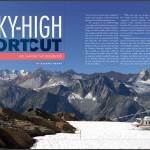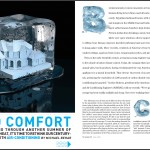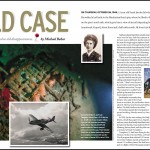 Sky-High Shortcut Download PDF
Sky-High Shortcut Download PDF
Heli-Hiking the Bugaboos.
“Let’s begin by learning how to breathe,” declares Lyle Grisedale, a lanky 66-year-old alpine guide and lifelong mountain bum.
I’m standing on an 8,000-foot-high rocky ridge with Grisedale and a group of a dozen hikers in British Columbia’s Bugaboo Range. It would normally take at least two days trudging uphill through wooded slopes and across snowfields to reach this perch. Our journey took six minutes aboard a Bell 212 helicopter. The brawny twin-engine beast delivered our entire posse from the Bugaboo Lodge, an upscale retreat operated by Canadian Mountain Holidays (CMH) that is tucked in a lush valley 3,100 feet below the peak. Grisedale works for CMH, an adventure outfitter founded 50 years ago by an Austrian immigrant who pioneered the use of helicopters for ski touring and backcountry hiking. Continue reading









